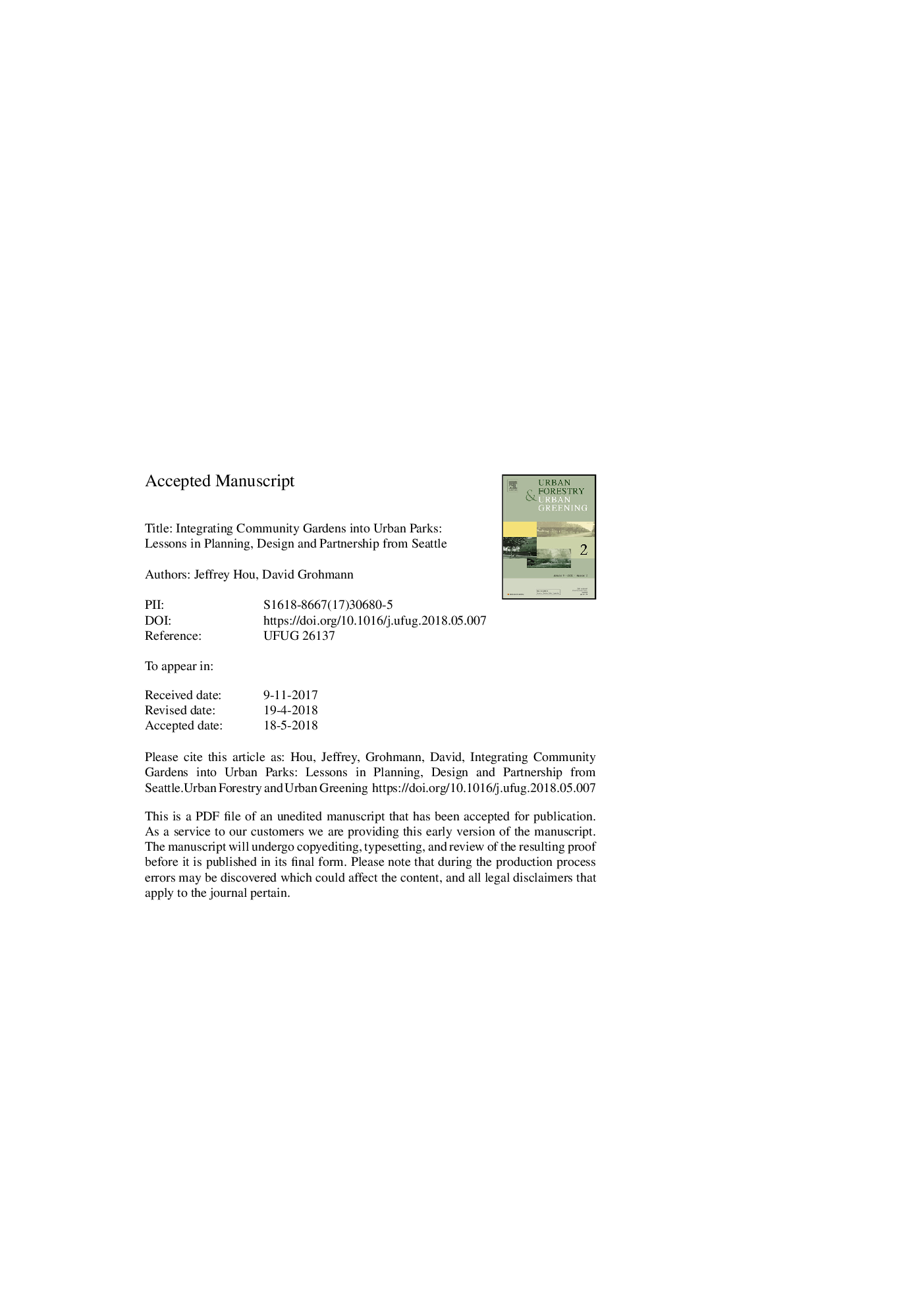| Article ID | Journal | Published Year | Pages | File Type |
|---|---|---|---|---|
| 6549165 | Urban Forestry & Urban Greening | 2018 | 44 Pages |
Abstract
With rising interest in urban agriculture and urban food issues, community gardens have become an increasingly welcomed feature of urban landscapes. Reflecting this growing interest and demand, there has been a corresponding shift from temporary occupation of vacant sites to integration of community gardens into urban parks system. Such integration holds significant opportunities for community gardens to achieve stability, expand their overall footprint, and become a more integral part of the urban built environment. But as community gardens become a more accepted feature of public parks, what are some of the key issues and challenges of integration? How can community gardens thrive under a different spatial and institutional framework that governs public parks? Using Seattle as a case study where integration of community gardens into public parks has a long history as well as significant recent growth, this article examines lessons and challenges of such integration. Specifically, it identifies lessons including the clarity of roles and responsibilities of different agencies and the importance of collaboration and partnership as well as participatory site planning and design. It also points to perception of community gardens as private use and spatial and programming conflicts between gardening and other park uses as continued challenges.
Related Topics
Life Sciences
Agricultural and Biological Sciences
Forestry
Authors
Jeffrey Hou, David Grohmann,
